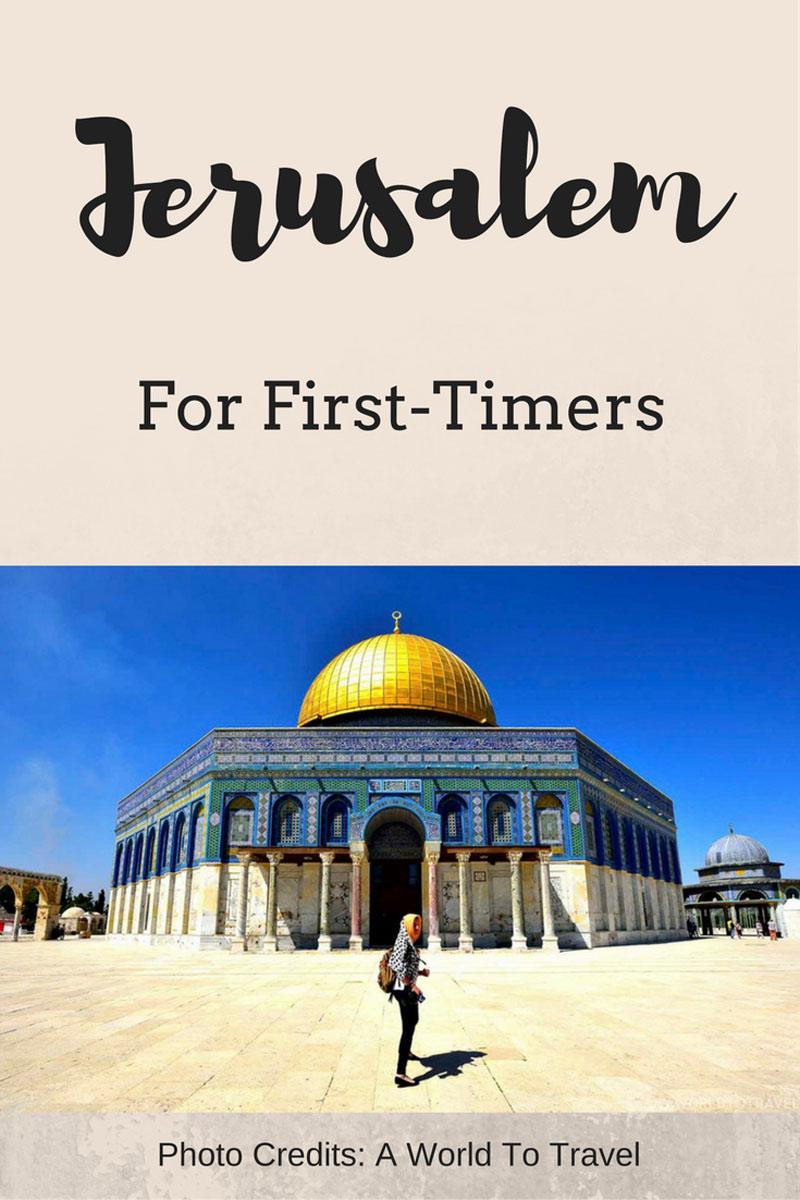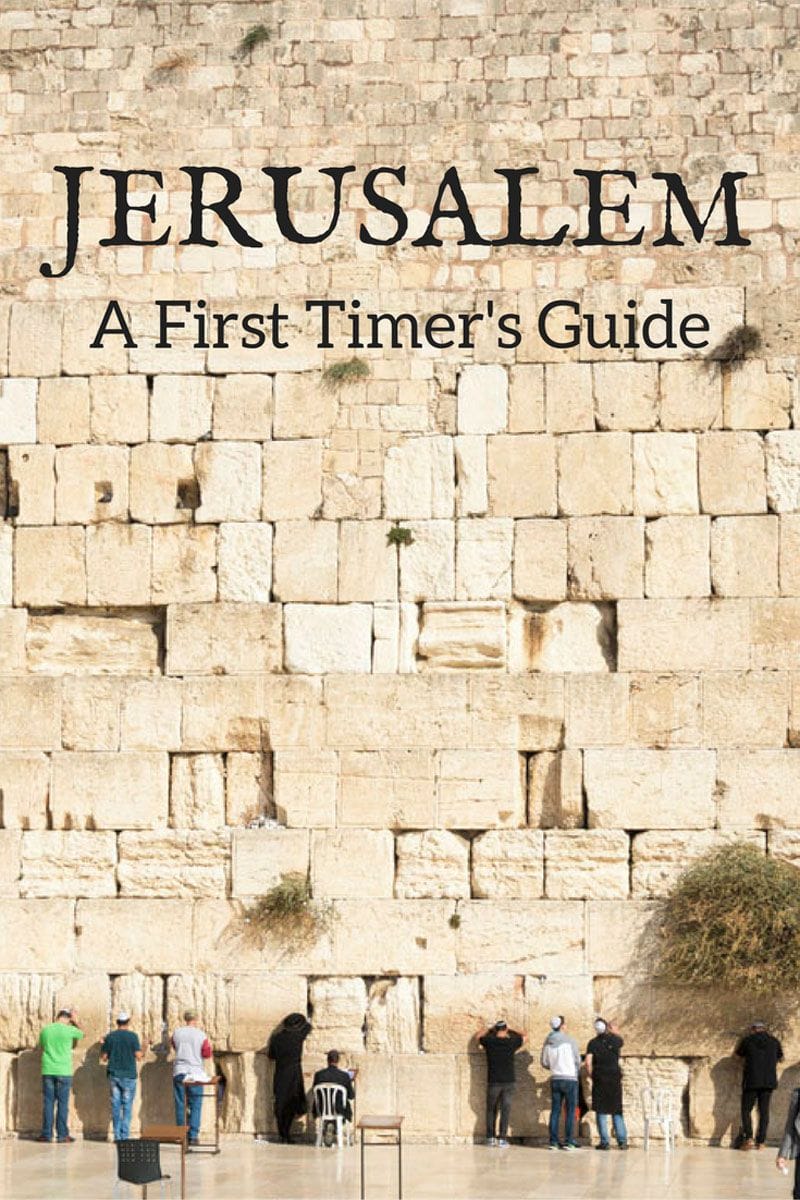Are you a first time visitor looking for a guide of things to do in Jerusalem? There you go, lots of activities from religious sites to alternative sights and adventures, and naturally lots of tasty food!
‘Jerusalem is an onion’ said our guide at Ein Karem. I thought there was no better way to describe the Holy City. Jerusalem is an onion. And just like all onions, Jerusalem is a product of layers – layers of history, culture, people and religion, each of them contributing to making it the complex (and breathtaking) city that it is today.
Jerusalem is one of the oldest cities on Earth, continuously inhabited for over 3500 years. It is sacred city for three religions – Judaism, Islam and Christianity. It is place where spirituality comes alive, and sometimes overwhelms people with full force. After all, as another of our guides said, Jerusalem is the only city with a mental illness named after it – the Jerusalem syndrome.
The Hebrew name of Jerusalem is Yerushalaim. The suffix -aim is a plural in Hebrew, for Jerusalem is not a city but many. It has been so for thousands of years – and it is so today. There’s a Jerusalem for everyone. From Christian pilgrims from all over the world, to history buffs and wannabe Indiana Joneses. From foodies following the footsteps of Yotam Ottolenghi looking for the perfect hummus, to artists and hipsters alike looking for the ‘next’ Tel Aviv – you’ll find your Jerusalem, I promise. You just need to peel the layers, and find your own.
There are so many things to do in Jerusalem that a lifetime in the city probably won’t be enough – so I’m not claiming to have composed an ‘ultimate guide to Jerusalem’ after only three days in the city. We didn’t have time to check some of Jerusalem’s most famous sights like the Mount of Olives, Dome of the Rock and Holocaust Memorial – so I’ve asked fellow bloggers for help, and several of them agreed to contribute to this article.
Here’s my first timers guide of things to do in Jerusalem to help you plan your time in the Holy City – starting from the basics and moving on to adventure activities, foodie and hipster hotspots, and ending with some ideas for day trips from Jerusalem, including the West Bank.
The Basics – Religious and Cultural Jerusalem
Active Jerusalem
Alternative Jerusalem
Day Trips from Jerusalem
Where to Eat in Jerusalem
Where to Stay in Jerusalem
How to Get to Jerusalem
The Basics – Religious and Cultural Jerusalem
The Old City
The walled Old City is the heart of Jerusalem, the place where most religious sites are located. Despite its diminutive size (only 1 square kilometre, can you believe it!) it packs in a huge amounts of things to do and see. Up until the 19th century, when the city started to develop outside the walls, all of Jerusalem resided within the walls of the Old City. Thousands of souls, for thousands of years lived, loved and died there.
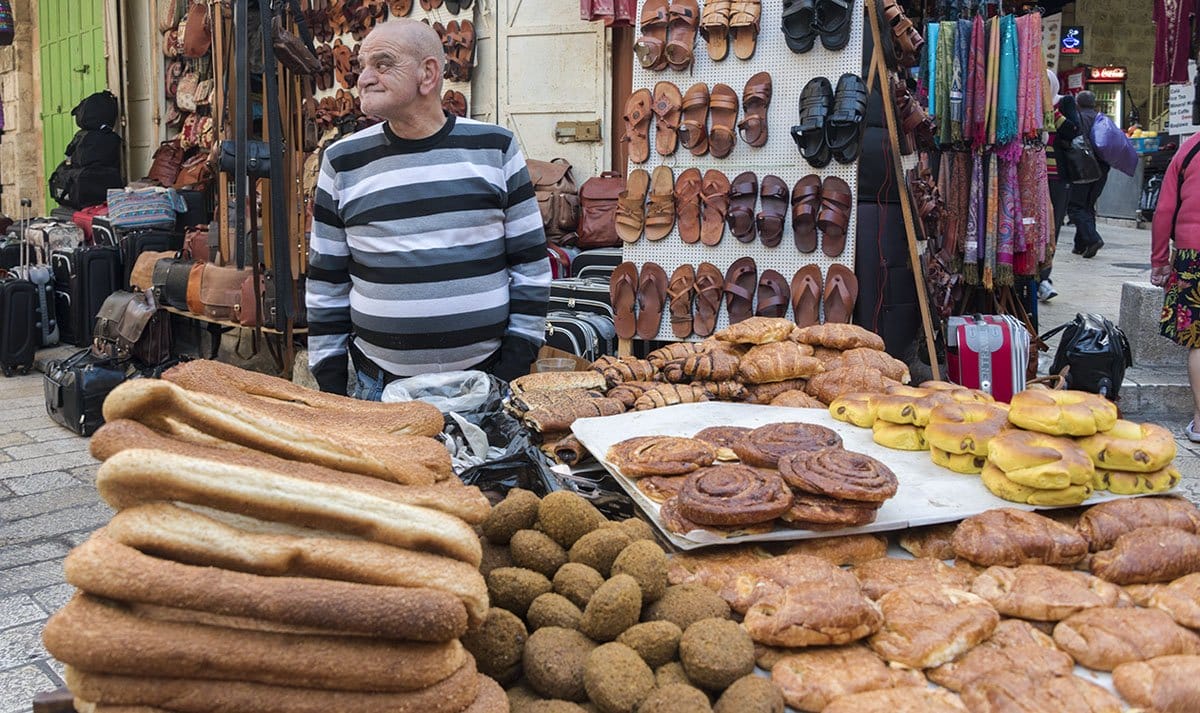
It’s easy to wander aimlessly and get lost between the narrow streets and passages of the old city, stopping for a coffee and baklava or for a chat with one of the Old City’s legendary shopkeepers like Eli Kahvedjian, owner of a photography store established by his grandfather, who will be glad to show you his collection of early 20th century photographs of Palestine.
The Old City of Jerusalem is divided in four quarters. North of Jaffa Gate you’ll find the Christian Quarter, including the Church of the Holy Sepulchre, then moving clockwise you’ll encounter the Muslim Quarter, full of shops, little restaurants and sights like the Ecce Homo Basilica, then the Jewish Quarter with the Western Wall, and finally the Armenian Quarter, south of Jaffa Gate, with the Citadel (location of a stunning sound and light show), Cathedral of St James and Armenian Patriarchate.
The two main points of entry to the Old City are Jaffa Gate, located between the Christian and Armenian Quarters, and Dung Gate, the closest place to access the Western Wall. For a fun and unusual way to travel between the Jaffa Gate and Western Wall Plaza, you can choose to ride the Old City Train, a little tourist train on wheels taking you through the Christian and Armenian quarter in about 20 minutes, with commentary provided.
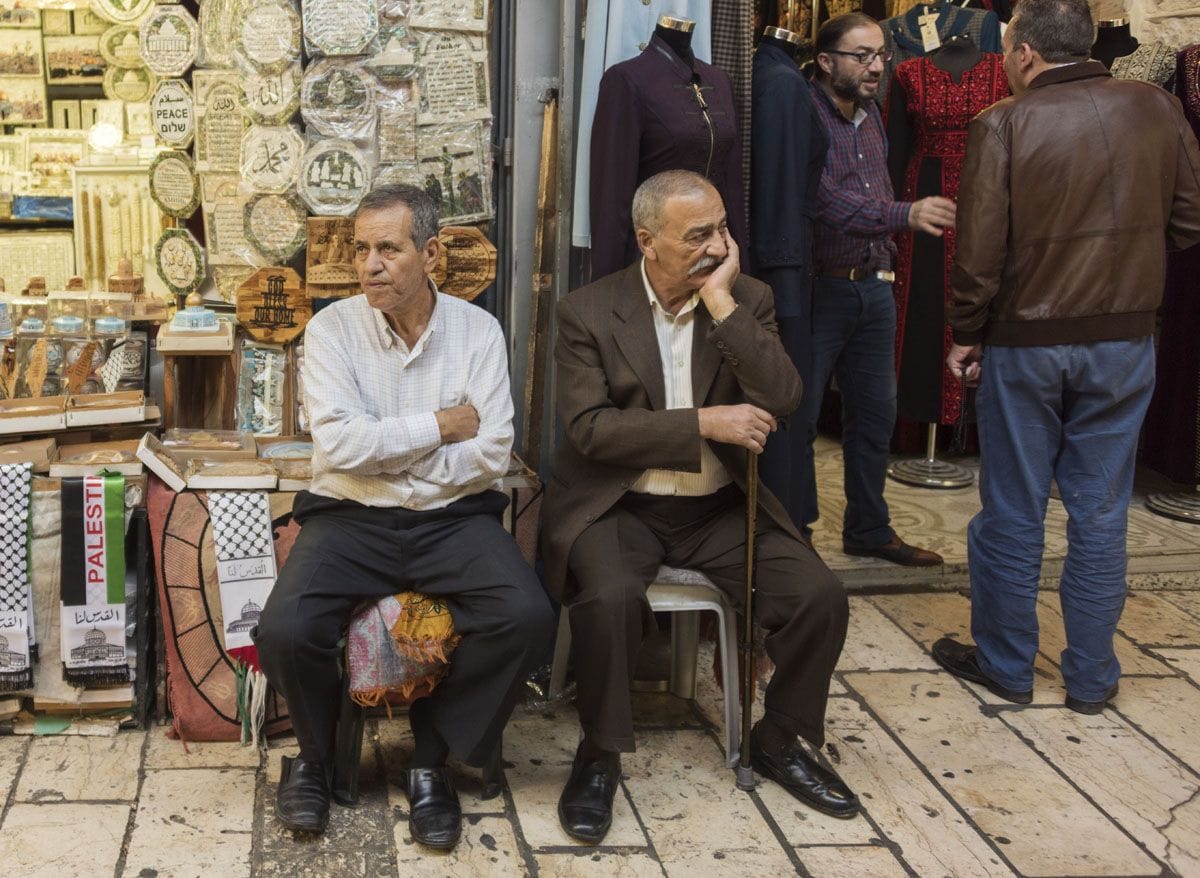
Ramparts Walk
A walk on the city ramparts is the perfect way to start your exploration of the Old City, finding your bearings and enjoying some wonderful views as you go. Together with the Old City, the walls of Jerusalem are Unesco-listed. They were built by Suleyman the Magnificent in the 16th century, while the city was under Ottoman rule. At that stage, Jerusalem was already over 2000 years old.
Sadly, it’s not possible to walk around the whole of the Jerusalem city ramparts, as the section overlooking Temple Mount is closed off. The most scenic section follows the southern side of the walls, from Jaffa Gate to Zion or Dung Gate, offering views of the Old City, Mount of Olives, East Jerusalem and the golden Dome of the Rock.
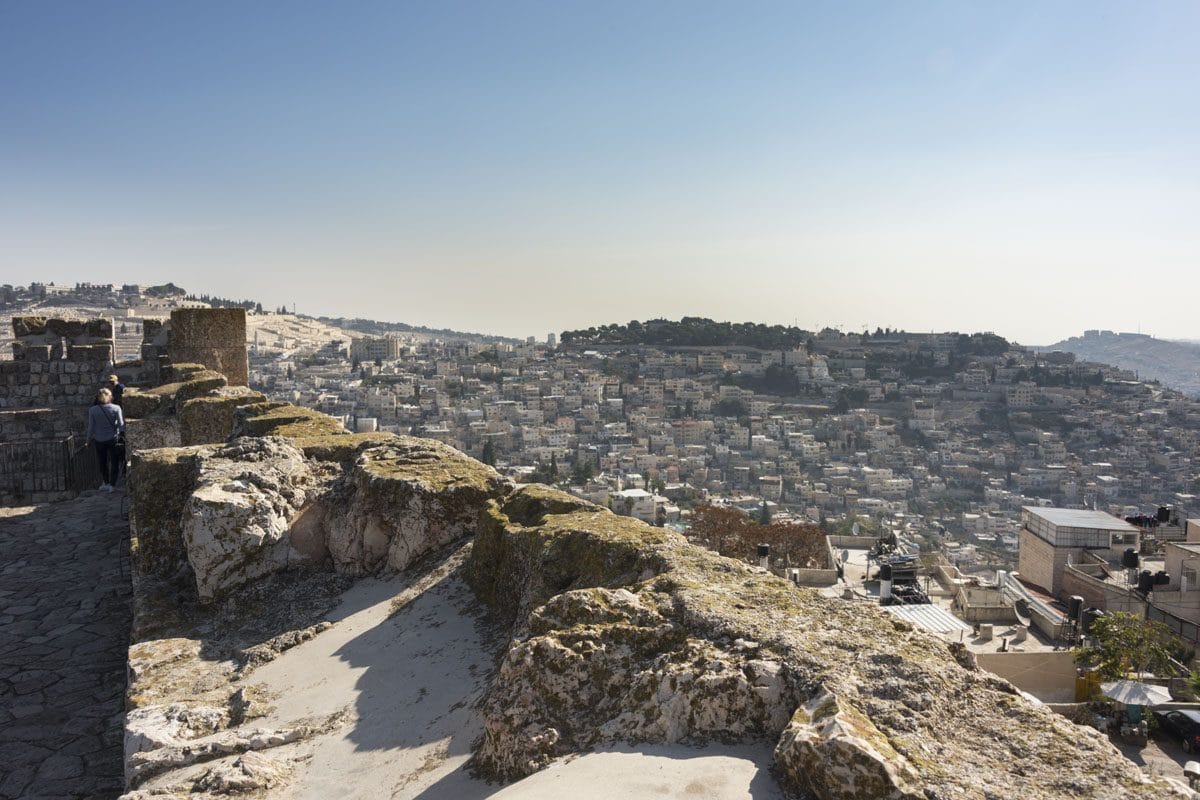
The Western Wall
The Western Wall is one of Jerusalem’s most famous sights – I’m sure you’ll all have seen pictures of a huge wall built in golden stone, with devotees praying in front of it, stuffing prayers in the cracks between stones. The Western Wall, also known as the Wailing Wall, is the last remaining wall of the Second Temple of Jerusalem, destroyed by the Romans at the time of their conquer.
The area located beyond the Western Wall is known as Temple Mount. It’s the holiest site in Judaism, the area where the Temple used to stand. At the same time, Temple Mount is also a holy Islamic site – the presence of the Dome of the Rock and the Al-Aqsa Mosque make Jerusalem the third holiest place for Muslims, after Mecca and Medina.
Jews are not allowed to pray at Temple Mount due to the sacredness of the site, as the exact location of the Holy of Holies (the inner sanctum of the former temple) is not known. So, even though Temple Mount is the holiest place in Jerusalem the Western Wall is the holiest place where Jews are allowed to pray. I know, it’s complicated – but so is Jerusalem.

You need to pass through a security check before entering the Western Wall plaza, where men and women are divided to access their respective sections of the wall. The men’s section is about 5 times larger than the women’s section. It’s definitely a very intense and moving place – as you approach the wall you’ll notice that the cracks are stuffed with prayers. You’re welcome to add your own, stop for a moment, and listen to history.
Temple Mount – Dome of the Rock (by Inma @ A World to Travel)

This construction is as important for Muslims as the Church of the Holy Sepulchre for Christians or the Western Wall for Jews, a one of a kind architectural gem that visitors and locals look up to daily. The ‘Rock’ in its name refers to the rock where Abraham attempted to sacrifice his son Isaac, and it’s believed to be the spot where the Prophet Muhammad ascended to heaven accompanied by the Archangel Gabriel.
Via Dolorosa
The Via Dolorosa is the original Via Crucis, the path taken by Jesus Christ on his way to crucifixion. It starts at Lions Gate, near the site of where Pontius Pilate’s praetorium used to stand, and follows the location of the ancient Decumanus, one of the two main roads in Roman times, until it reaches the Church of the Holy Sepulchre.
The Via Dolorosa is only 600 meters long, but it’s possibly the most popular pilgrimage location for Christian groups following the 14 stations of the cross – the first nine stations are located along the road and are marked by plaques, lunettes and inscriptions, while the final 5 are inside the church itself.
Church of the Holy Sepulchre
Regardless of whether or not you are religious, this place will leave you speechless. The memories of my own visit to the Church of the Holy Sepulchre are nothing but a whirlwind of colours, lights, bodies and passions, feelings of otherworldly spirituality intertwined with the weight of two millennia of history, wars and suffering that took place in this tiny – but oh so intense, it could well be boundless – corner of the world.
The Church of the Holy Sepulchre was built around Mount Golgotha, the site of Jesus’s crucifixion and the place where he is believed to have been buried and resurrected. The Church looks unlike any of the churches that I had seen up until that day. There’s no focal point, or rather there are many – the Stone of Anointing, where Jesus’s body was oiled before his burial, the Golgotha Altar, where you can touch the actual rock of Mount Golgotha, and the smaller chapel called the Aedicule, containing the Holy Sepulchre itself. We only spent an hour inside this church, but we could easily have spent a whole day.
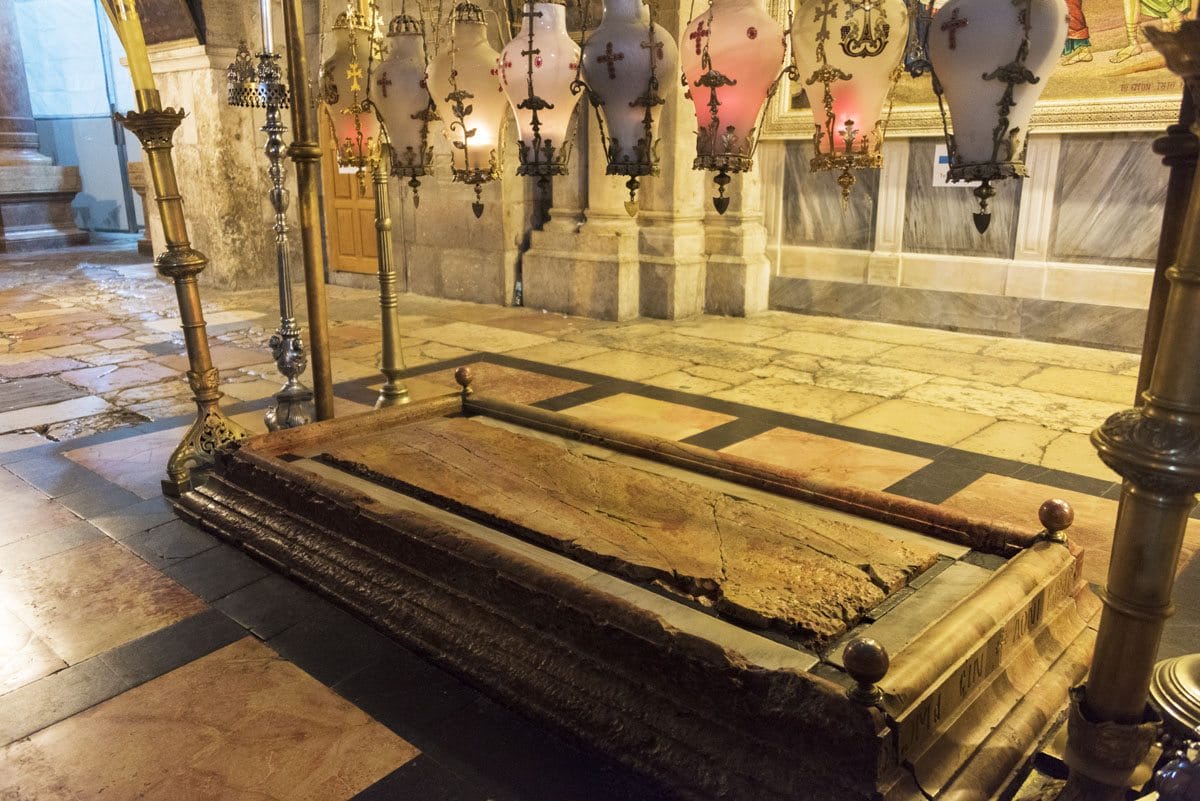
The Church is shared between several denominations – Catholics, Greek Orthodox, Armenians, Syriacs, Egyptian Copts and Ethiopians all have their very own chapels and sections. A Muslim family have been custodians of the key for nearly one thousand years, a tradition that continues to this day.
Mount of Olives by Pedro Richardson @ travelwithpedro.com
Located away from the walled city of Jerusalem, Mount of Olives is a place I heard about since my childhood. The area is mentioned several times in the Old Testament and appears several times in the New Testament, since Jesus was ‘a regular visitor’.

In a city where it is sometimes difficult to separate history and religion, these credentials make Mount of Olives one of the most interesting sites around Jerusalem. One of the most interesting places is the Church Pater Noster, built next to the place it is believed Jesus taught the Lord’s Prayer. There, you can find many tiled panels with the prayer in more than 140 languages.
But most people tend to spend their time at the foot of Mount of Olives. Here is where you can find the picturesque St Mary Magdalene church, with its golden domes, common in many Russian Orthodox churches. Not far away are the Catholic Church of All Nations and the place believed to be the tomb of Mary.
Tourists and pilgrims have been visiting these religious sites at the Mount of Olives for millennia. But it’s the fascinating view of Old Jerusalem that it offers, with its walls, towers and the Dome of the Rock as a centrepiece that most travellers will remember.
Ein Karem
Another place away from Old Jerusalem, Ein Karem used to be a separate village that now forms part of the city. Ein Karem is worth a visit for two reasons – first and foremost is the Church of St John the Baptist, a Catholic church built in the location where St John the Baptist was born. It’s a completely different experience compared to the Church of the Holy Sepulchre – whereas the latter is swamped with devotees, the former sees far fewer visitors, and the atmosphere is contemplative and serene. The church was restored by a Portuguese order, and it’s covered in beautiful azulejos.

The other reason to visit Ein Karem is enjoying its peaceful village-like atmosphere, miles away from the tourist-packed Old City. We followed cats wandering in and out of courtyards, past beautiful doors and stone walls covered with ivy, stopped for a snack in an artisan chocolate store and walked around the gardens of a monastery where a meditation retreat was taking place. We ended our jaunt with a glass of wine from Alegra Hotel, a cute boutique property with a rooftop terrace offering a lovely view on the Mount of Olives and on the golden domes of the Church of Mary Magdalene.
The Israel Museum
The Israel Museum is the largest in the Middle East, showcasing a number of collections that include archeological artefacts, paintings, sculptures and even a huge model of ancient Jerusalem on the rooftop. The highlight of the museum is definitely the Shrine of the Book, where you can see the Dead Sea Scrolls, believed to be the most ancient manuscripts in the world.
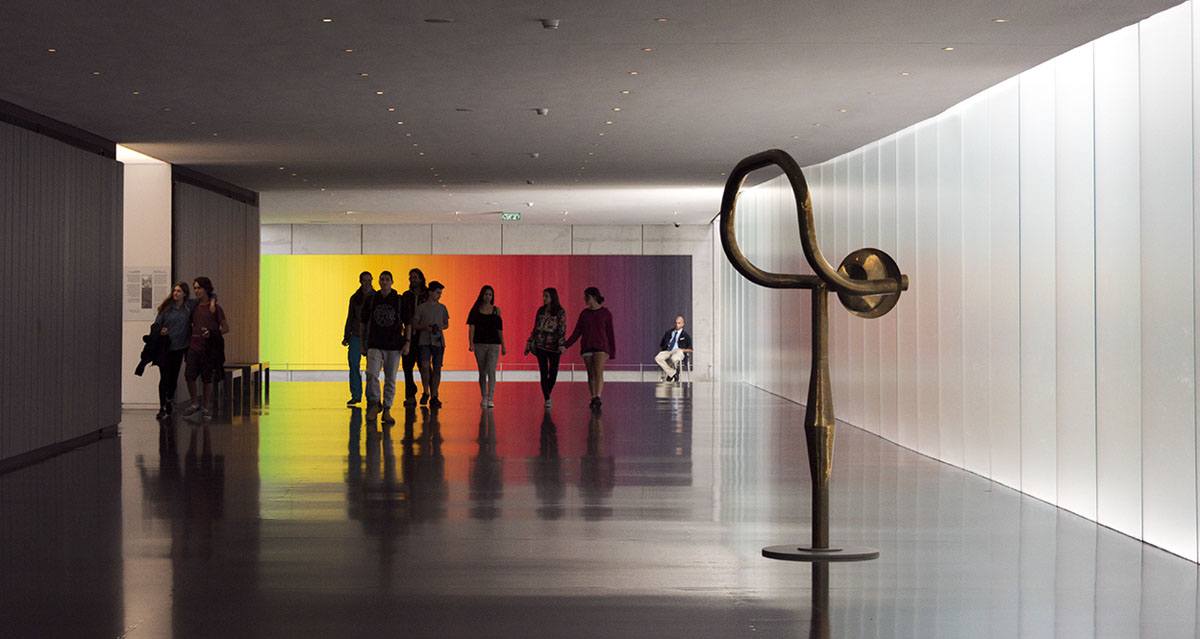
We were lucky to have a guided visit with Dr. Adolfo Roitman, the curator of the Shrine of the Book. He took us on an hour-long tour of the Shrine, introducing us to the scrolls and showing us the latest addition to the shrine – Nano, the smallest Bible in the world, a chip the size of a grain of rice where the whole Bible is inscribed.
The Holocaust Memorial by Nisha @ Lemonicks
Yad Vashem, the Holocaust museum is not only a memorial for the 6 million Jews who lost their lives in the holocaust; it also works as a research and education centre on the holocaust. One room after another, it gives us goosebumps that stay till we step out of the museum. Artefacts, books, clothes, footwear and other belongings bring tears to our eyes. The last room, the Hall of Names, has files and files containing the names of the heroes.
When you enter the memorial for all the 1.5 million children who lost their lives to the mindless killings, you are bound to be moved. The photos of the young boys and girls are projected on the glass and in the background one can hear their names, age and country of origin. Millions of reflections of twinkling lights, which actually originate from just 5 candles kept at various angles using mirrors, intensify the grief. There is also a memorial named Righteous, for all those non-Jews who risked their lives and helped Jews at their time of plight.
There are so many things to do in Jerusalem, especially around the Old City, that I’m aware I’m only scratching the surface with this post. But guess what – one more reason to go back!
Active Jerusalem
Segway Tour at Twilight
The Old City is a maze of tiny streets, but once you get out of the walls the situation changes altogether – the rest of the city is quite recent, relatively speaking. The neighbourhoods of Mishkenot Sha’ananim and Yemin Moshe were built at the end of the 19th century by British banker Moses Montefiore, as a solution for the severe overcrowding of the Old City. Being located outside the wall, at first no one wanted to move to the new districts – in order to convince them, citizens were offered free housing, and even money.
Nowadays, Mishkenot Sha’ananim and Yemin Moshe are two upscale neighbourhoods with great views over the old city. A segway tour with Zuzu Segway is great way to explore the area, including sights like the Montefiore Windmill and Teddy Fountain with its geyser-like spouts. If you’ve never been on a Segway fear not – it’s easier than it looks!
Underground in the City of David
Out of all the ‘unusual’ things to do in Jerusalem, this was my favourite. The City of David is believed to be the place where Jerusalem began, the urban core of the Jerusalem that existed at the time of the Prophets, over four millennia ago. Nowadays, you can visit the tunnels underneath the ancient City of David – a fortress was constructed over the Gihon Spring, the main source of water for ancient Jerusalem, because residents knew that those who control water, control the city.
I hear some of you wondering why I liked it so much. After all, visiting an underground city is nothing new, right? I’ve already done it in Perugia and Osimo, no? Well, if you choose the ‘wet’ tour, you can visit the tunnels where spring water still flows – in total darkness, with nothing but a flashlight to guide your path. Water level depends on the season, but it can be up to waist deep. Make sure you bring something like sandals or diving booties to walk through the tunnels, and bring a change of clothes for when you get out!
Jerusalem Scavenger Hunt
Another fun way to discover Jerusalem is on a scavenger hunt with Scaventures. We formed teams and were given our instructions – we had to complete a series of challenges (walking around in fancy dress, hugging strangers and finding mysterious locations…), answer riddles and solve clues scattered all around Jerusalem. It’s a fun way to discover the city, bringing to life locations that we wouldn’t normally visit.
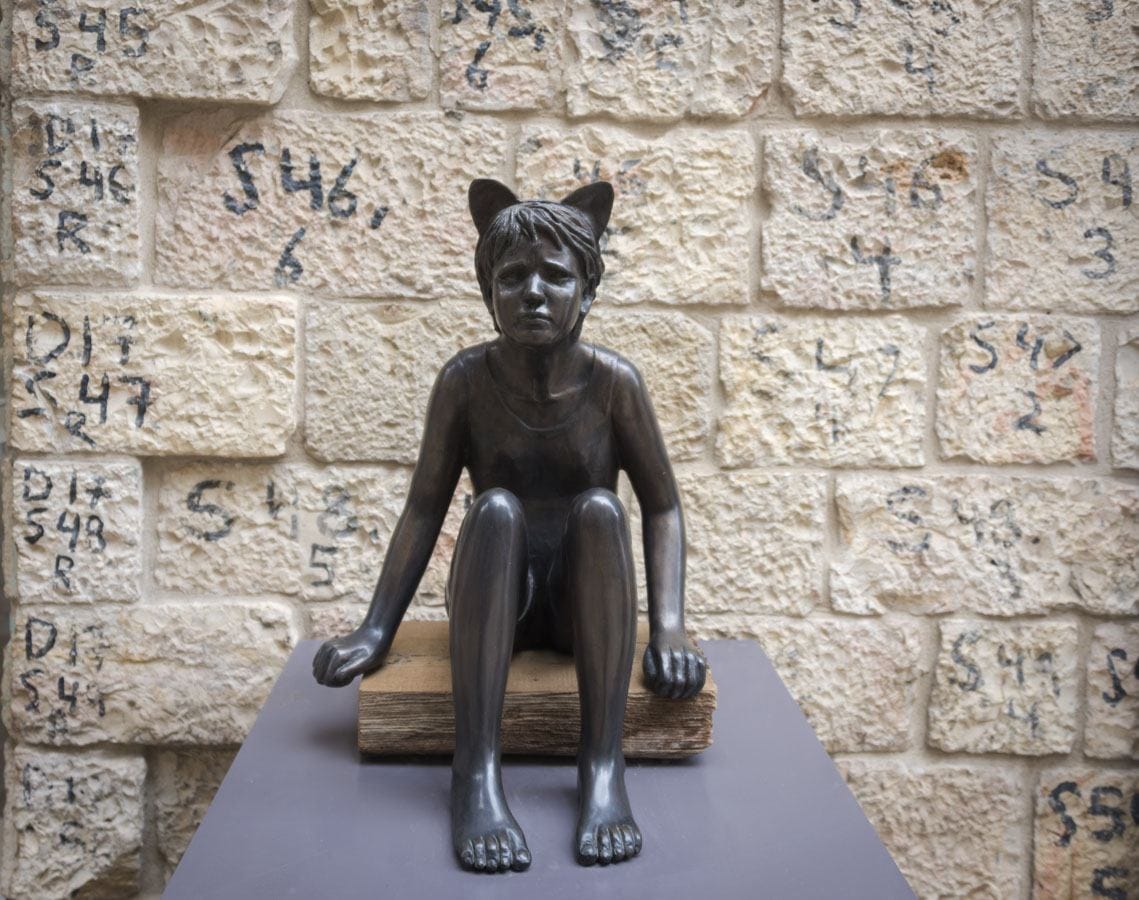
Alternative Jerusalem
Machane Yehuda during the day…
I don’t know why I’m calling the Machane Yehuda market ‘alternative’. I think it’s definitely a must visit, and again it’s up there in my favourite things to do in Jerusalem. The Shuk, as it’s usually called, is Jerusalem’s biggest market. It’s a busy place, with delicious food everywhere you look – rows of glistening baklawa, halva topped with roasted nuts, fruit and vegetables, street food… I always feel bewildered in these kind of places. Where shall I go? What shall I eat? What if I miss that not-to-be-missed local place that makes the best *insert food item*?
Here is where Bitemojo comes in. The concept is quite simple – a self guided food tour. The Shuk is so busy, that following a guide is very hard (and trust me, we tried). On a Bitemojo tour you simply follow a map that takes you to various places of interest – most of them food related, but not exclusively. Once you get to a food stop, you simply show your phone to the seller who will hand you a ‘bite’ – we tried khachapuri (Georgian bread topped with cheese), craft beer, kubeba (fried croquettes stuffed with meat) and a cookie with ice cream to end with a sweet note.
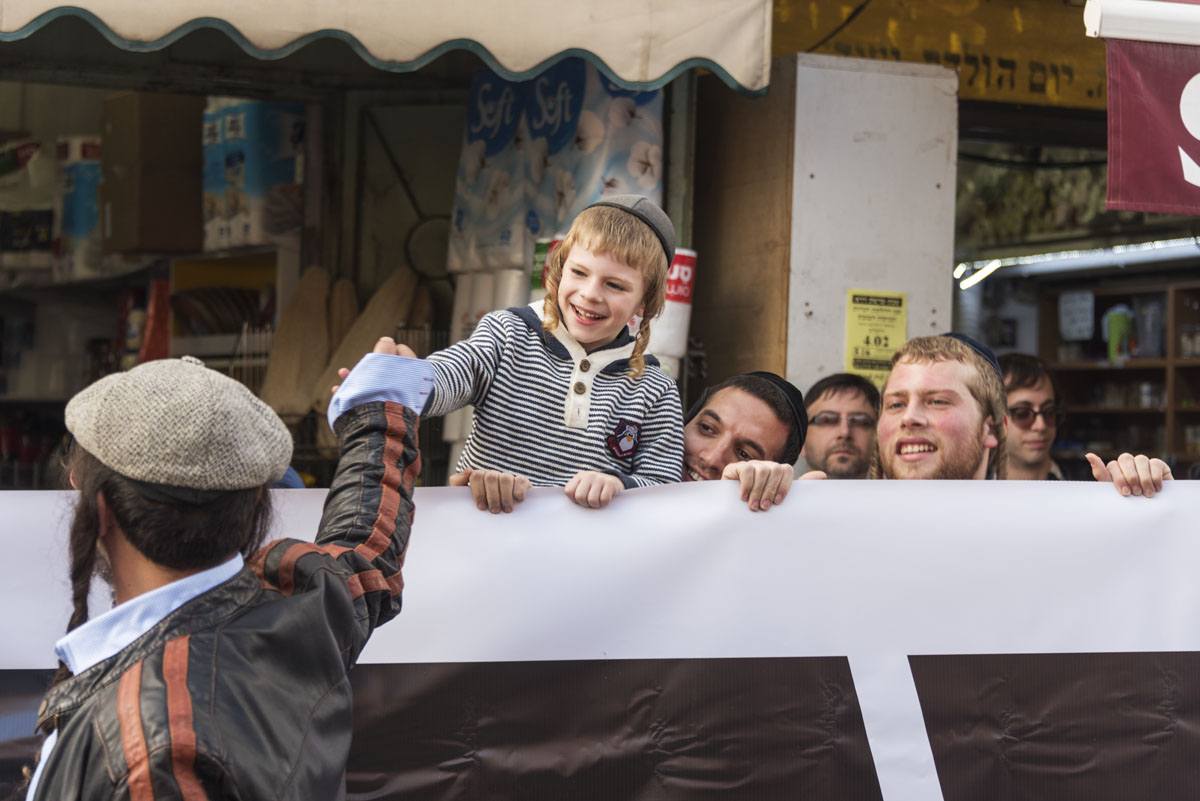
….and at night!
Most markets are kind of dead during the night – not the Shuk, who seems to be living a parallel life after sunset. Gone are the fruit and veg stalls, it’s time for the bars to open their doors. With cool music, outdoor seating and lots of delicious food and drinks, the Shuk is definitely one of the coolest Jerusalem hangouts after dark – with an atmosphere that is light years away from the touristy Old City and similar to what you’ll find in Tel Aviv, Israel’s fun capital.
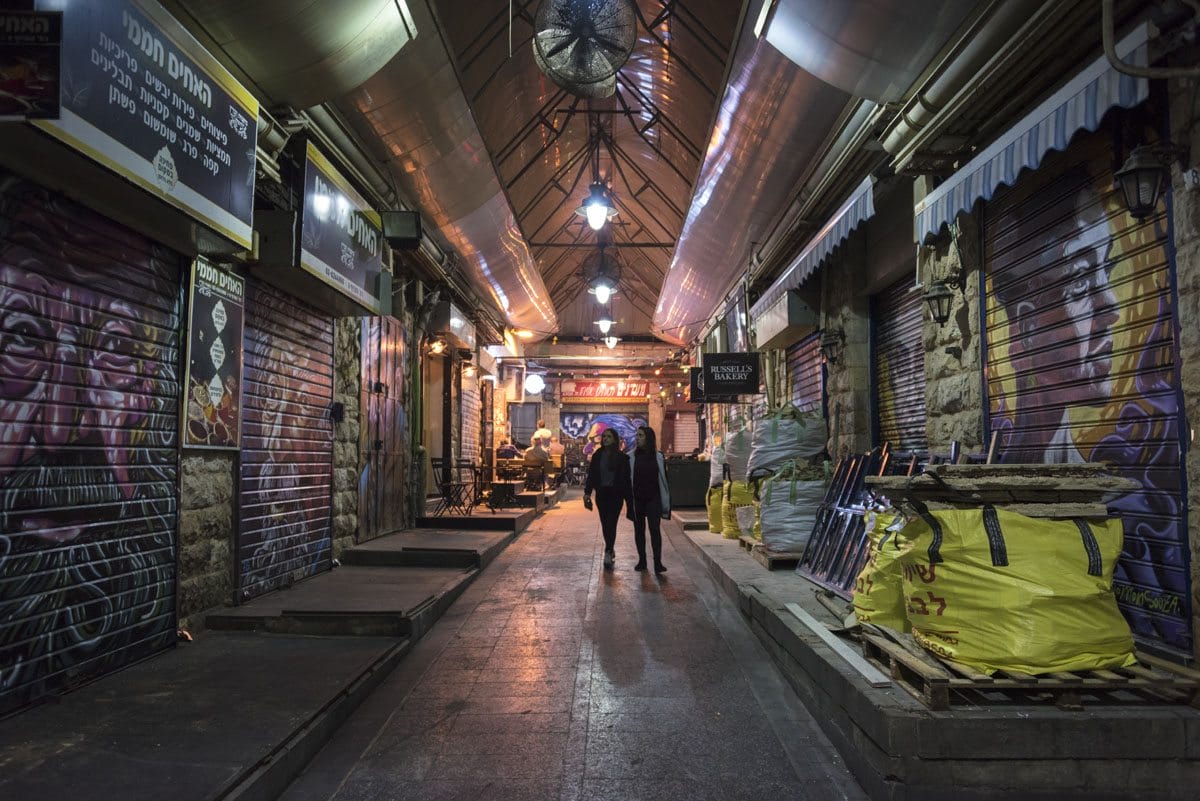
There’s also another reason to visit the Shuk at night – checking out Solomon Souza’s street art, 150 portraits of historical and contemporary figures painted on the shutters of the stalls, making the atmosphere of Machane Yehuda at night even cooler!
Explore Urban Art
Talking about art, we didn’t see much street art around Jerusalem besides the Shuk, but there are a couple of places where you can see some urban art projects – my favourite was the rooftop of Clal Center, an indoor shopping mall built in the Seventies which is worth a visit for its cool Brutalist-style architecture alone.
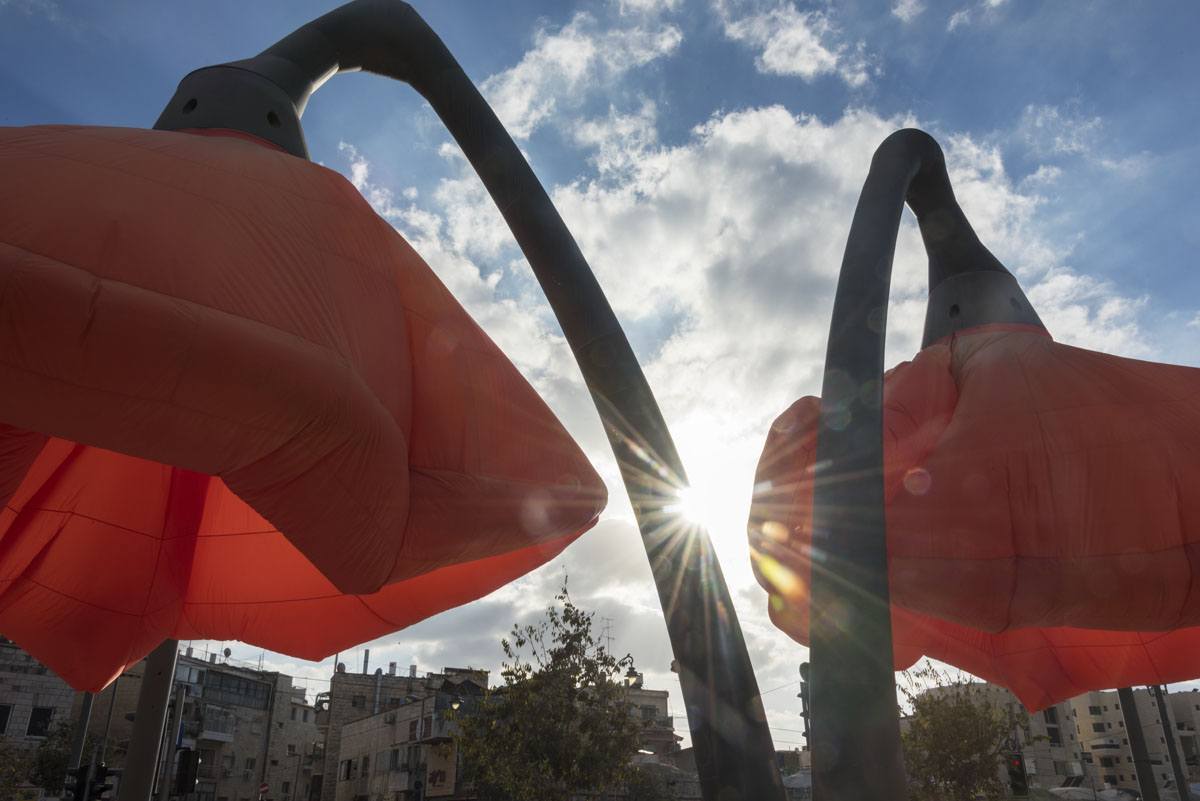
Another cool piece of urban art are giant poppies that inflate when you walk by, found in Valiero Square, near the ultra-orthodox district and not far from Machane Yehuda market. If you want to meet young artists, both local and from around the world, you can head to Beita Jerusalem, a contemporary art centre located in a really cool building.
There are also many cool contemporary art galleries in Jerusalem if you want to explore the booming artsy side of the city!
Day Trips from Jerusalem
Ramallah by Kamila @ Kami and the Rest of the World
I must admit I didn’t have very high hopes for Ramallah, simply because I knew next to nothing about it. Most visitors in the West Bank focus on Bethlehem only, overlooking the biggest city and the capital of the Palestinian Territories. Big mistake! As it turned out Ramallah is an interesting place to visit and it was actually my favourite in the West Bank.
It might not have many monuments (Yasser Arafat’s Tomb being the most important one) but the city has this cool, vibrant vibe I liked so much. I found it to be a typical bustling Middle East city, with hectic traffic, numerous small businesses and street sellers everywhere. But at the same time it wasn’t overwhelming at all, making you want to stay there longer and just enjoy the place (and the food!)
Get the best prices for Area D Hostel and St.Andrew’s Guesthouse in Ramallah!
Bethlehem by Sarah @ Coffeewithasliceoflife
Most people hear about Bethlehem from the Bible and hear only about its religious values. However, Bethlehem is more than just a holy town, it is vibrant, exciting and emerging into somewhat of a tourist hotspot. I visited a few months ago during my time in Israel and was so surprised with what I saw.
The main square is bustling with cafes and sweet shops, serving up delicious treats such as Knafe ( a warm cheese topped with sugar) and Baklava. And at night the streets become full of hungry tourists just finished a day of visiting the church of nativity, where it is said Jesus was born, ready for some of the best falafel and hummus they will ever taste.
I strongly recommend you also taking a trip up to Ramallah when you are in Bethlehem – even just for the ride among the desert alone.
Tel Aviv
Tel Aviv and Jerusalem couldn’t be more different – despite being only 50 km from one another, they may well be on different planets. Jerusalem is full of historical and cultural sights, whereas Tel Aviv is a young city, with a fun and carefree vibe. Tel Aviv is on the coast, and the weather is warm year-round – when we visited (late November), there were 15°C in Jerusalem, and 28 in Tel Aviv!

There are frequent bus connections between the two cities, making a day trip to Tel Aviv an easy option. With a day, you can visit Carmel Market, Old Jaffa and the beaches – but we do recommend spending at least one night, to enjoy Tel Aviv’s amazing nightlife. We will be writing an article about Tel Aviv shortly, so watch this space!
Masada, Ein Gedi and the Dead Sea
This is a fun day out from Jerusalem, offered as a combo tour by several operators including Abraham Tours. We did the tour from Tel Aviv, but it’s actually closer from Jerusalem! There’s a very early wake up call, as the aim is reaching Masada, a stunning archeological site on top of a hill, for sunrise. The climb is about 300 meters up – it can be taxing if you’re not fit, but the view at the top definitely makes up for all the effort!
The tour continues to Ein Gedi, a nature reserve and oasis in the desert with ibex roaming free and four beautiful waterfalls, and finally to the Dead Sea, where we all jumped in and enjoyed floating and covering ourselves in mud.
Where to Eat in Jerusalem
Anna
Anna was my favourite place to eat in Jerusalem by far. It’s a kosher dairy restaurant, meaning that meat isn’t served, but there’s an emphasis on dairy products, alongside delicious fish and vegetable-based preparations. The food is Italian-inspired – we had an excellent selection of starters, different kinds of pasta to share and pan-fried seabass on a bed of risotto. Everything was delicious, but the dish I’ll remember forever were the gnocchi, which were the best I have ever eaten, with a fluffy texture and citrussy flavour. Truly amazing.
Machneyuda
This seems to be THE place to go to in Jerusalem, the first restaurant opened by celebrity chefs Asaf Granit, Yossi Elad and Uri Navo who now owns several eateries, including The Palomar in London. We visited Machneyuda at the end of our evening tour of the Shuk and we were treated to a surprise – a kind of performance where chefs decorated a whole table with different desserts, sauces, icecreams and fruit. Then we all ate with spoons straight from the table! I am a real dessert lover, so I thought I had died and gone to heaven! Now I can’t wait to return to Jerusalem for a proper meal at Machneyuda!
Modern
If you’re visiting the Israel Museum, make sure you stop for lunch at Modern, the museum restaurant. We had a lovely lunch on the terrace that included a selection of starters, grilled meat and some stuffed vegetables for our vegetarian friends. Highly recommended!
Adom & First Station
The First Station is one of the go-to places in Jerusalem at night. It’s the former railway station, reconverted into a nightlife hub that includes, shops, bars, restaurants, a craft market and some live performances. We had dinner at Adom, a restaurant serving modern Israeli and Mediterranean food where I sampled Sabich, an Israeli specialty of fried aubergines, tahini and hard-boiled egg.
Where to Stay in Jerusalem
Inbal Hotel
If you’re looking for a stunning luxury hotel, with 24 hour room service, swimming pool, gym and all related mod-cons, the Inbal Hotel is the place for you. The hotel has a very distinctive look, with a facade reminiscent of a beehive and a cool patio-like internal courtyard. The executive lounge has a terrace with great view over the old city, perfect for a sunset tipple! There are also drinks and food on offer from 7 am to 10 pm.
My favourite thing about Inbal Hotel was the breakfast. The buffet was HUGE – there were eggs, a pancake and waffle station, a huge spread of salads, sweets, breads, hot food… literally anything you can possibly imagine. I loved the warm cholla bread stuffed with chocolate, delicious halva and cardamom coffee served in tiny cups.
Alegra Boutique Hotel
If you fancy staying in Ein Karem for a couple of nights, Alegra Boutique Hotel is a great option, especially if you’re travelling with your significant other. The hotel is located in a stunning historical building, and offers a range of rooms that maintain the historic atmosphere of the place, with all mod-cons. There’s also an exclusive restaurant and the terrace where we enjoyed a lovely aperitif overlooking the Mount of Olives.
Abraham Hostel
Backpackers and budget travellers, look no further – Abraham Hostels are the BEST you’ll ever stay at. The Jerusalem hostel is in a great location, a few minutes walk from most things to see in Jerusalem. You can choose between rooms and dorms of various sizes, and if you want to chill you can do so in the rooftop terrace or the bar, offering a great selection of drinks including some craft beer labels!
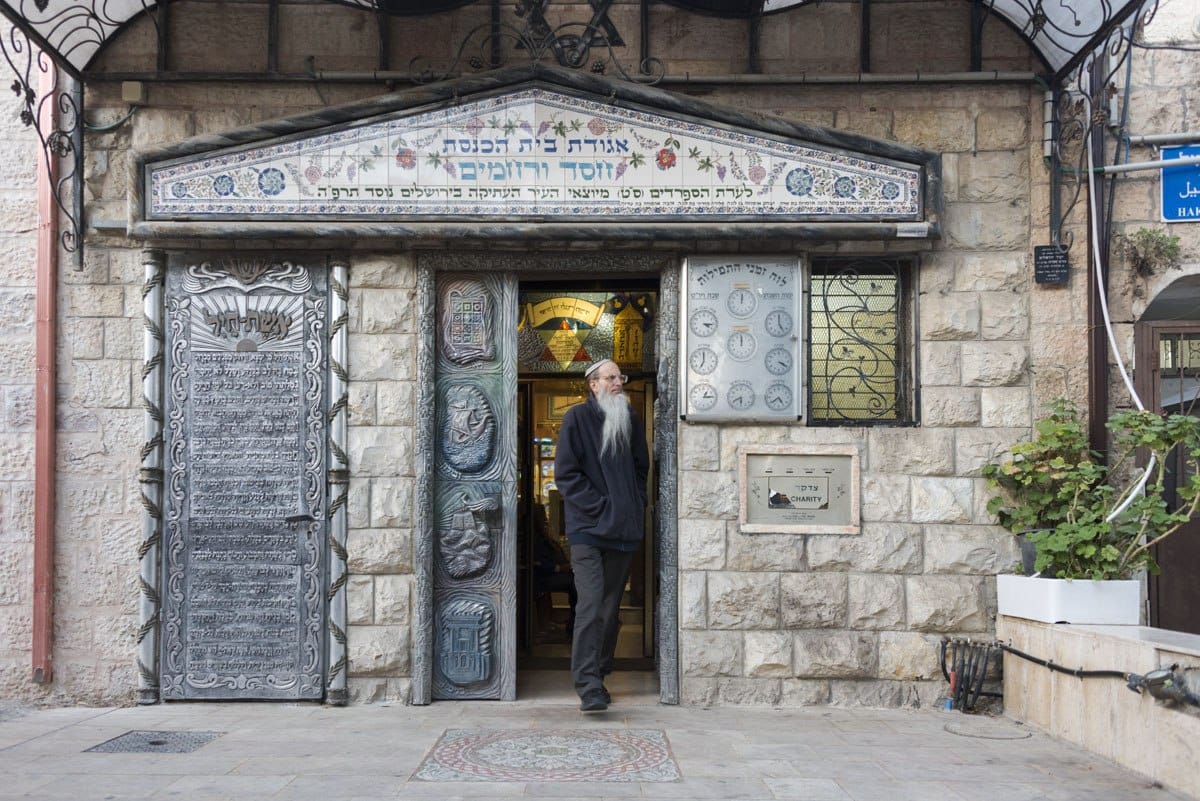
Their sister company Abraham Tours also organise wonderful tours, including city tours of various kinds around Jerusalem and Tel Aviv, day trips to the West Bank, the Dead Sea, kibbutz experiences and more as well as multi-day tours around Israel, Jordan and Egypt. We joined an Abraham tour to Masada, Ein Gedi and the Dead Sea and had the best time ever!
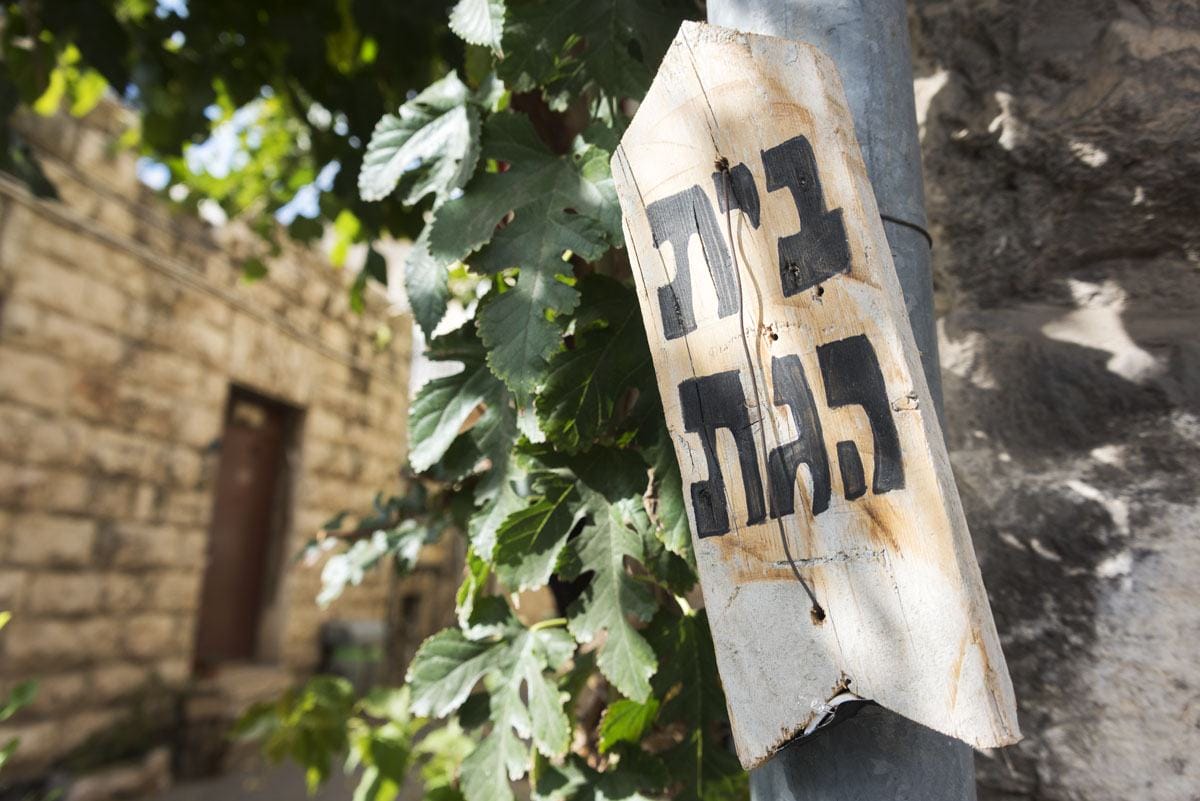
How to Get to Jerusalem
Please note that on Shabbat (which starts around 3 pm on Friday and lasts until Saturday evening) sherut and buses don’t run, leaving taxis as the only option to reach Jerusalem.
- By sherut (shared taxi) – the most convenient way to get to Jerusalem unless you want to pay for a taxi. Sherut leave just outside the terminal building and will drop you off at an address of your choosing in Jerusalem, for a price of about 60 NIS. Travel time should be about 1 hour and a half, depending on traffic.
- By bus – the cheapest option. First, you need to catch a free shuttle to the bus stop on a junction outside the airport area. Bus 945 and 947 runs every 20 minutes, headed to the Jerusalem bus station. Please note that buses are often busy and you may have to stand for the whole journey, taking about 1 hour and 10 minutes. Tickets are 30 NIS.
- By taxi – definitely the fastest way to get to Jerusalem, but also the most expensive. A taxi will cost around 250 NIS during the week, and 300 on shabbat. Make sure you travel with one of the official taxi companies – their booths can be found on the ground floor at terminal 3.
- Blacklane offers competitive fares and excellent service for airport transfer in Tel Aviv and Jerusalem, and they also operate on Shabbat!
My trip to Jerusalem was organised by TBEX and ITravelJerusalem as part of the #TBEXJLM campaign. All thoughts and opinions remain my own.
Pin it for later?
